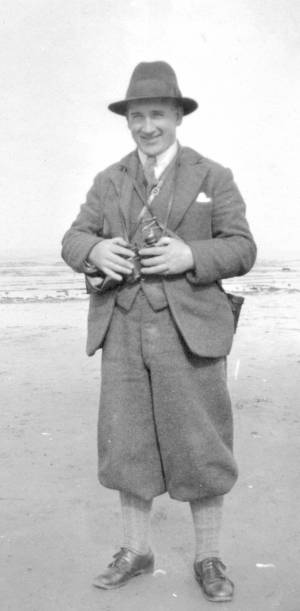Dr Phil Smith’s Wildlife Notes
December 2007
The last month of the year is also one of the least productive for the wildlife enthusiast, the sand-dunes in particular being quiet. However, time can now be found to write-up those summer observations and submit the data to the various regional and national recording schemes. This is a vital task, providing the necessary background information for effective wildlife conservation programmes.
John Edmondson of World Museum Liverpool kindly sent me a copy of his paper on the nature diaries of the great Southport Naturalist, Fred W. Holder (1891-1963). The diaries comprise over 70 notebooks with detailed records of natural history observations covering almost 51 years, on which the Museum has compiled an important database. I never met Fred Holder but, having read some of his diaries, I feel a good deal of empathy with him. On 11th May 1913, he wrote: “There is no pleasure so entertaining as a day spent on the sand dunes; here to the eye of the casual observer nothing but a barren waste of sand can be seen, but to the naturalist the hills teem with life and your senses must be keenly on the alert to see and behold everything.” Spot on, Fred!

Has anyone with garden feeders noticed more Blackbirds than usual? Our garden birds are often supplemented by overseas visitors and this month a big influx of Blackbirds has been reported, probably from Scandinavia and other parts of northern Europe.
Marshside saw another, more predictable, invasion as the reserve’s grazing marshes began to flood at the start of December. Duck counts included 17,500 Wigeon and 1150 Pintail, while wader numbers rose to 2600 Lapwings, 2100 Golden Plovers and 2200 Black-tailed Godwits. These are impressive figures, testament to the way the marshes are being managed by the RSPB.
Other winter-visitors to Marshside and the adjacent Ribble Estuary National Nature Reserve included Hen and Marsh Harriers, Merlins, Peregrines and a rare American Green-winged Teal, presumably the same individual that wintered here last year. Meanwhile, the Wildfowl & Wetlands Trust’s Martin Mere refuge attracted 1400 Whooper Swans, a few Bewick’s Swans and, briefly, a Cattle Egret from southern Europe. As usual, Southport Marine Lake had impressive numbers of Coot. My highest count was 1278 (just below the record), but nearly all of them disappeared for about a week when the lake froze – an unusual event in recent winters.

It is sad and worrying to hear about the outbreak of parapox disease in the Red Squirrels at the National Trust’s Formby Point property. About a dozen dead or dying squirrels have been found so far and volunteers are out searching for other infected animals. A similar outbreak affected Ainsdale National Nature Reserve last year and seems to have caused a fall in the population there. However, according to the Red Squirrel Monitoring Report 2007, numbers for the Red Squirrel Refuge as a whole show only a small reduction this year. Despite what has been written in the local press, there is little doubt that the disease is being spread to the Reds by invading Grey Squirrels and that measures to control the latter are key to the future survival of our local Red Squirrels.
